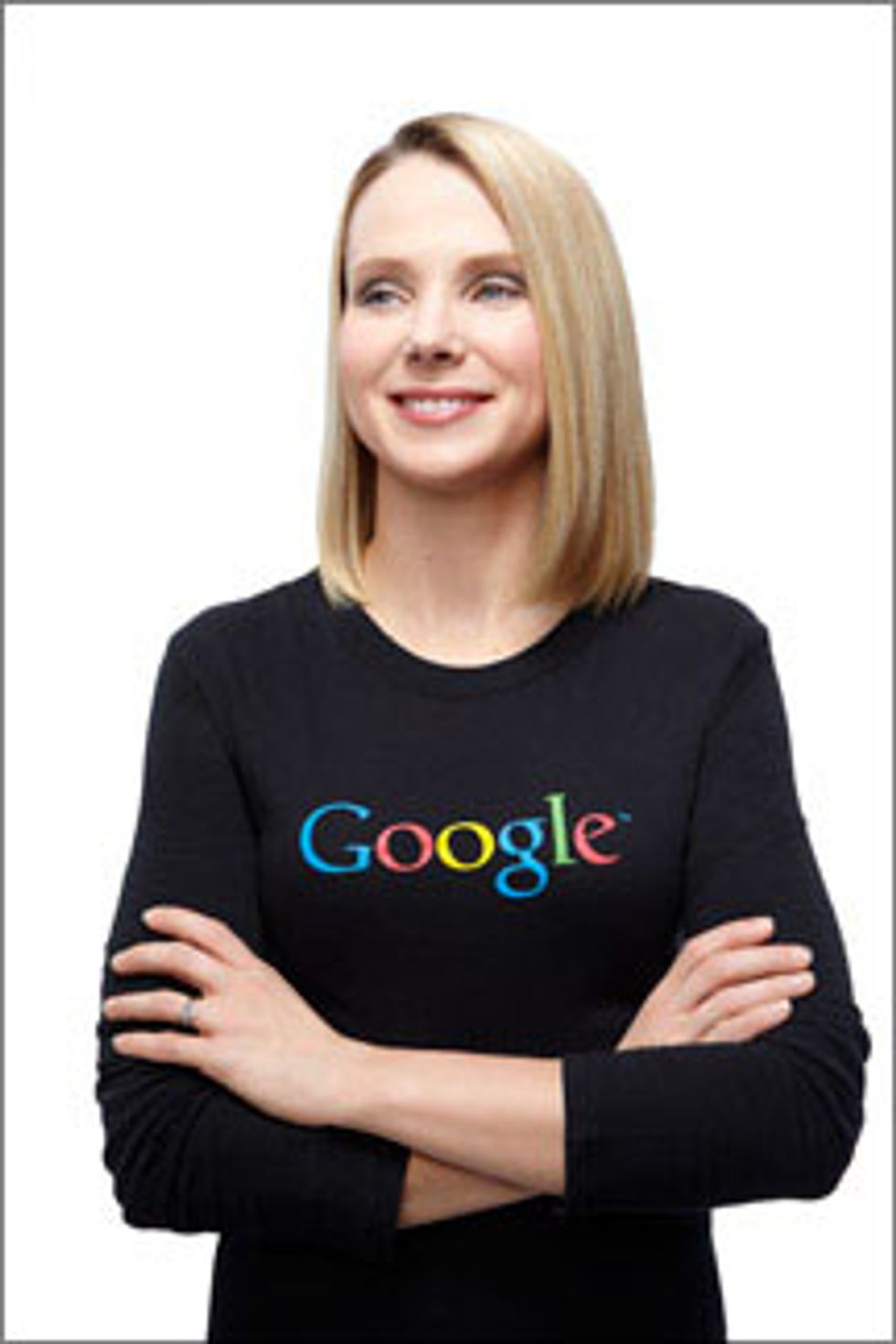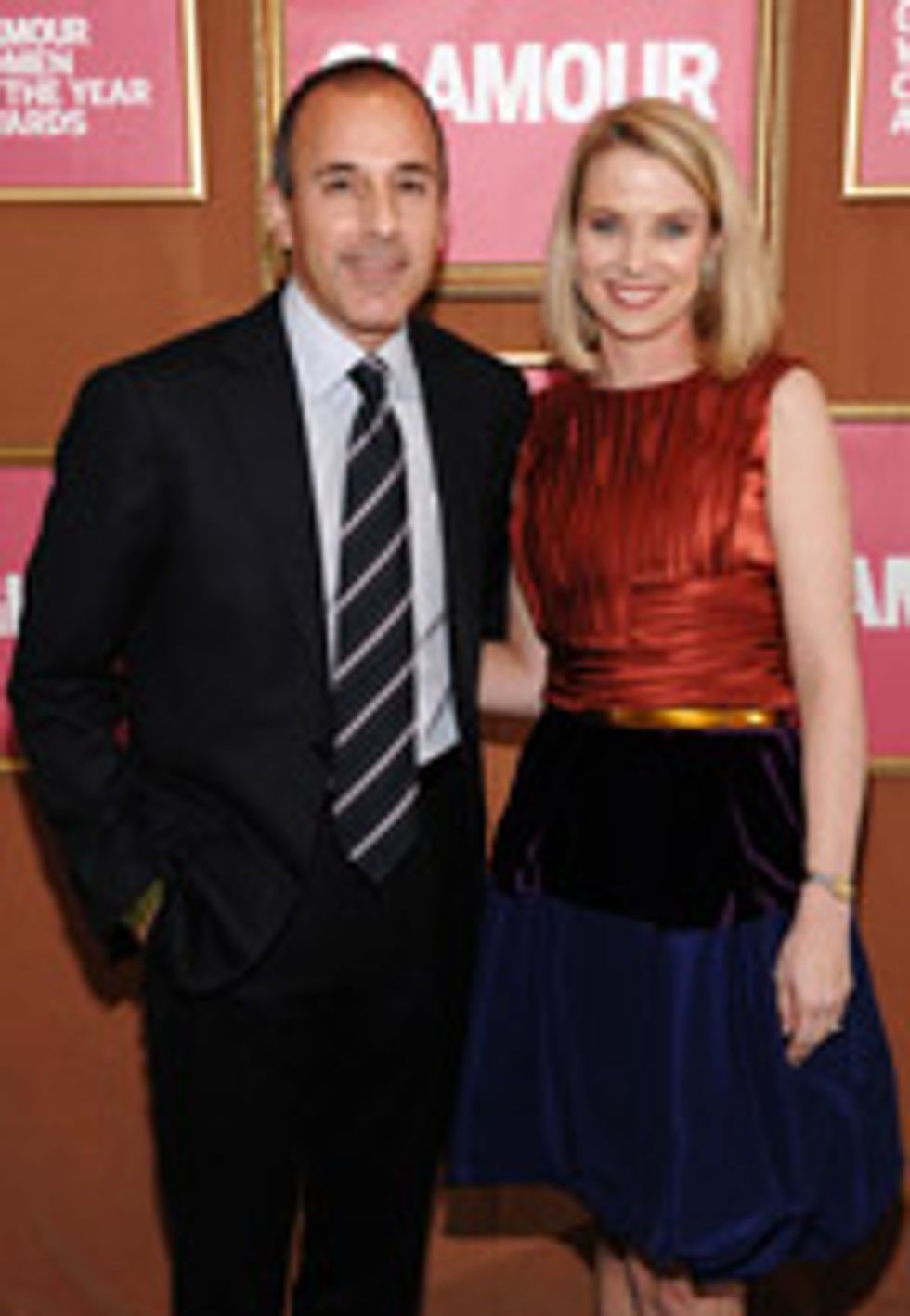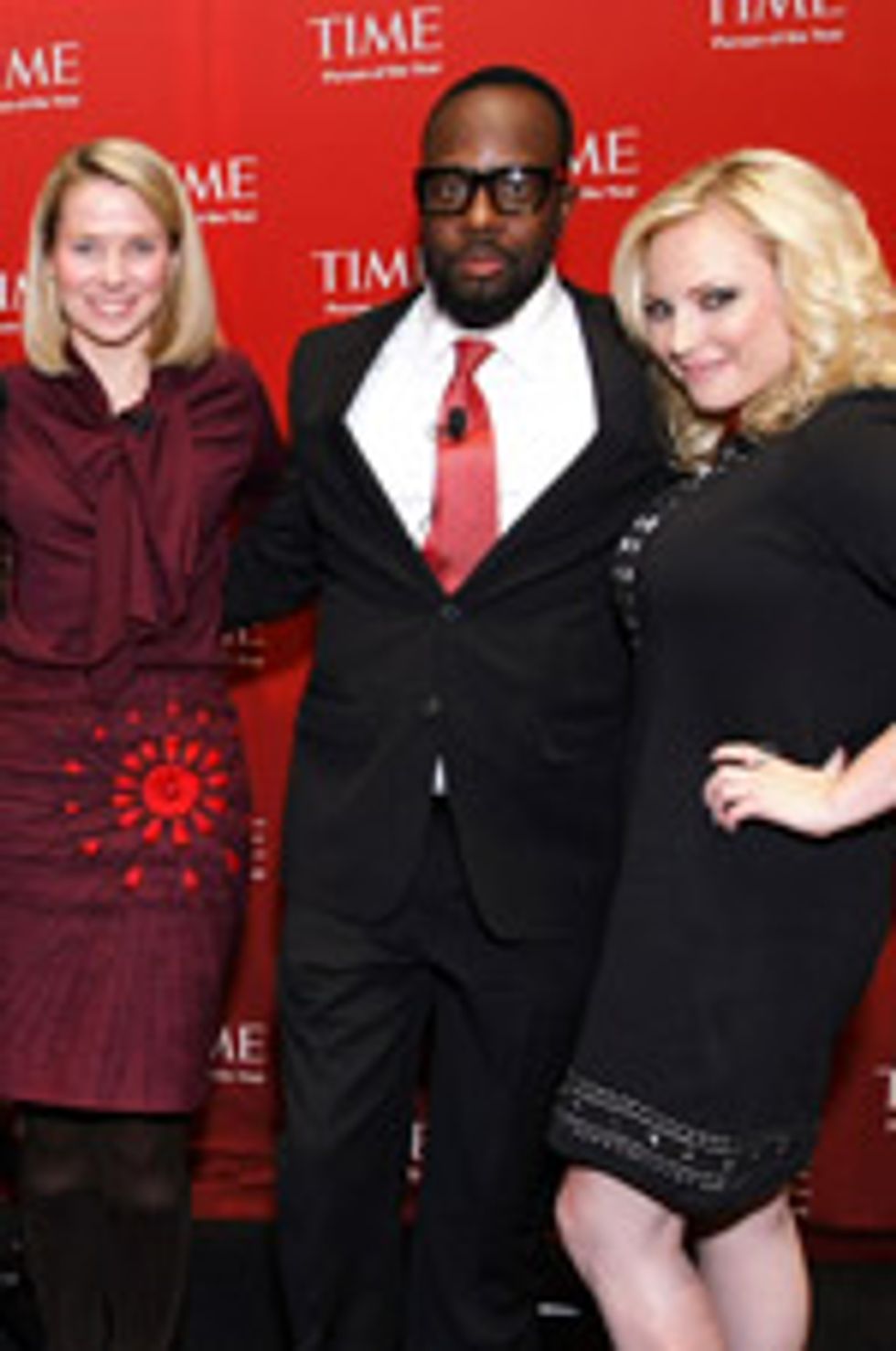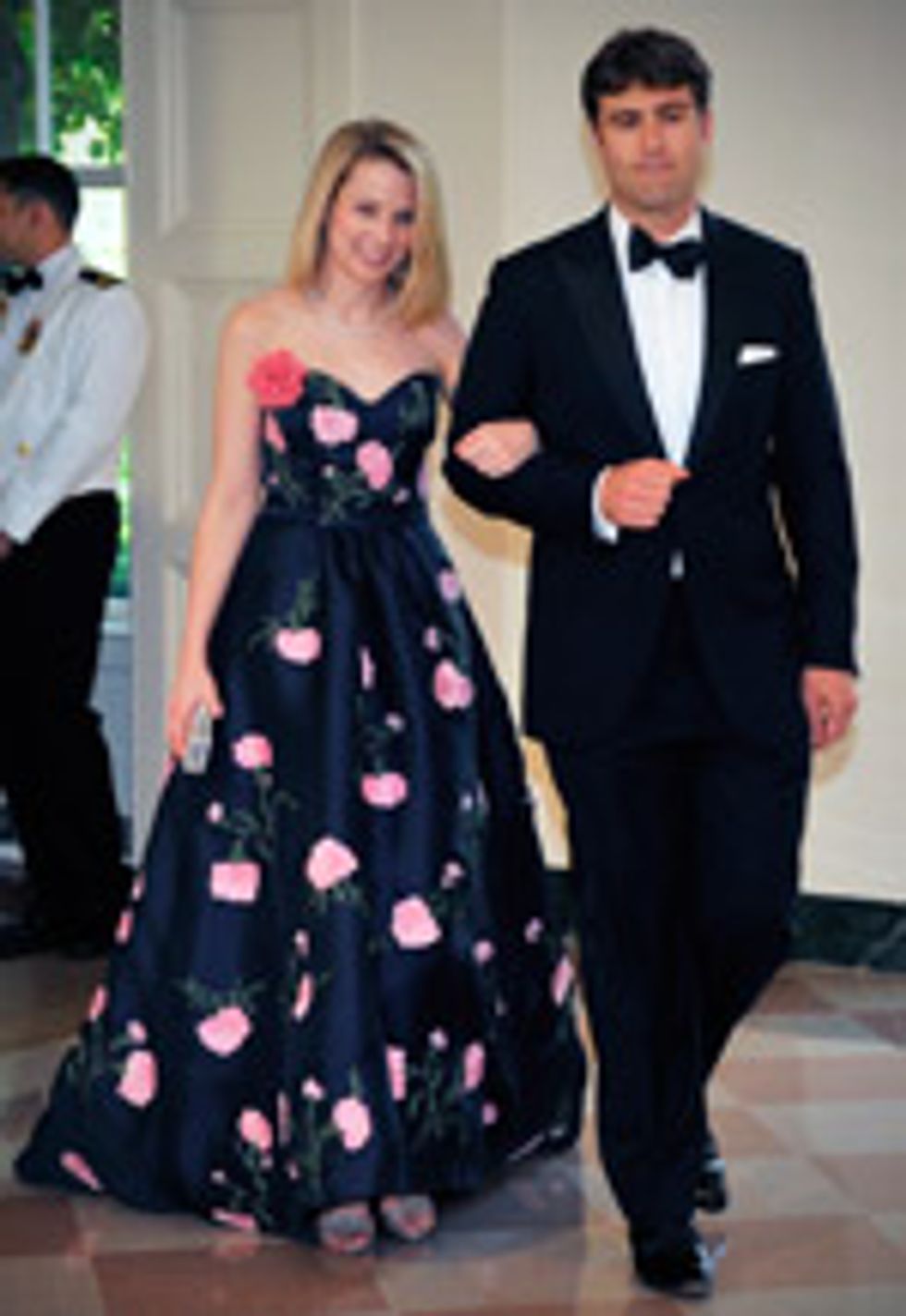Marissa Mayer: Google’s Chic Geek
This self-proclaimed “girly girl” runs one of Google’s fastest-growing services
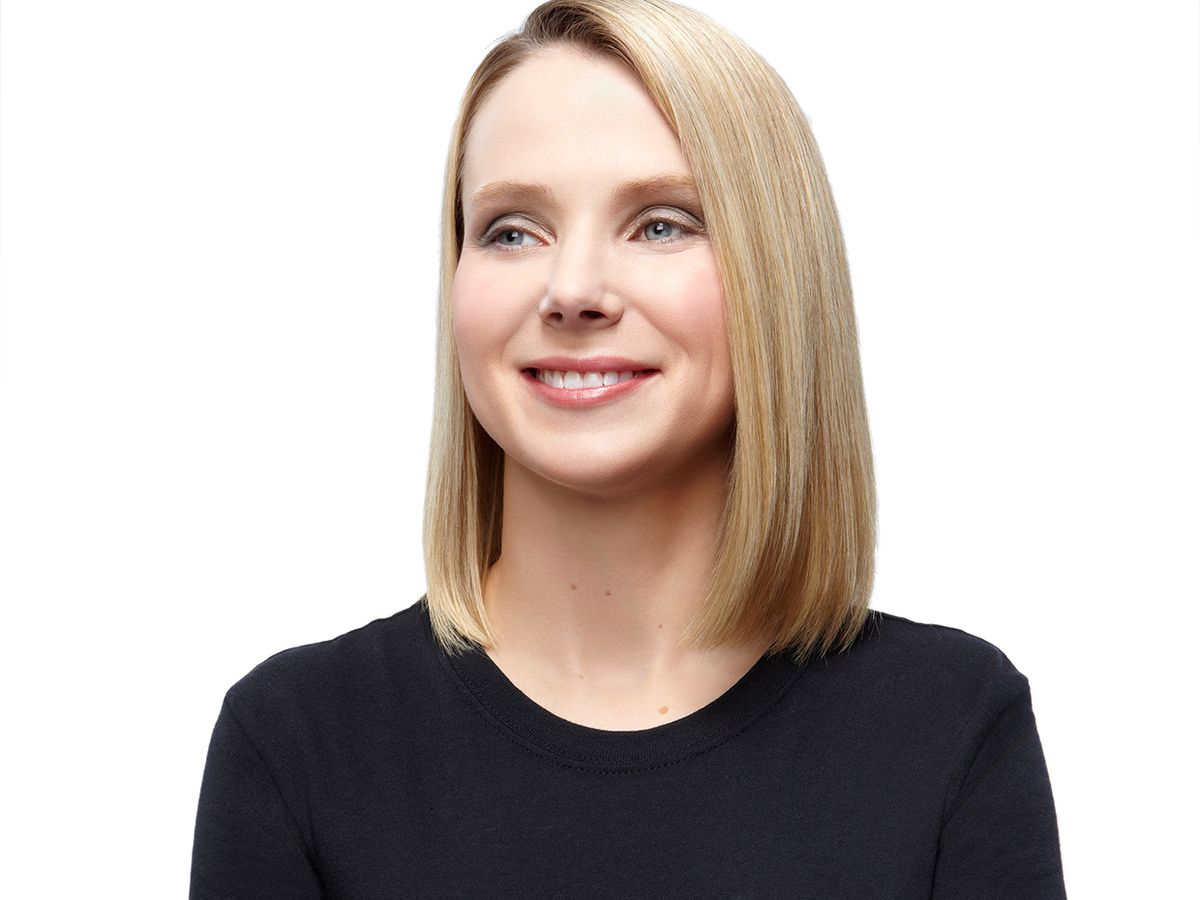
CLOSE-UP: MARISSA MAYER
CURRENT JOB: Vice president of location and local services, Google
DATE OF BIRTH: 30 May 1975
BIRTHPLACE: Wausau, Wis.
HEIGHT: 173 centimeters (5 feet 8 inches)
FAMILY: Married to Zachary Bogue
EDUCATION: B.S. symbolic systems, 1997, and M.S. computer science, 1999, both at Stanford University
FIRST JOB: Checkout girl at Crossroads County Market, Wausau, Wis.
FIRST TECHNOLOGY JOB:
Sales clerk at Software Etc., selling CompuServe and AOL access packages, database software, and popular computer games
ODDEST JOB: Usher at Roger’s Cinema, Wausau, charged with, among other things, telling people to keep their feet off the seats
BIGGEST SURPRISE IN CAREER:
The scale of it all. She says, “When I started at Google it had 400 000 searches a day. We’re now at more than 2 billion. There’s probably only a handful of people in the world who’ve had the opportunity to scale something 5000 times over.”
PATENTS: Four or five issued, several dozen pending
NONPROFIT BOARD MEMBERSHIPS:
San Francisco Ballet; San Francisco Museum of Modern Art; Smithsonian Cooper-Hewitt, National Design Museum; New York City Ballet
MOST RECENT BOOK READ:
Delivering Happiness by Tony Hsieh, founder of Zappos; Churchill by Paul Johnson
FAVORITE BOOK: The Design of Everyday Things by Donald A. Norman
COMPUTER: MacBook Pro
PHONES: Verizon iPhone 4, Verizon Droid Incredible, T-Mobile Nexus S, AT&T iPhone; Verizon 4G data card
FAVORITE TELEVISION SHOWS:
“Brothers and Sisters,” “Gossip Girl,” “Beverly Hills 90210,” “Grey’s Anatomy”
FAVORITE FOOD: Grilled cheese sandwiches
FAVORITE RESTAURANTS: Jean-Georges and La Bonne Soupe, in New York
FAVORITE MOVIES: It’s a Wonderful Life (1946), Say Anything (1989), Willie Wonka & the Chocolate Factory (1971), Moulin Rouge (2001), Legally Blonde (2001)
LEISURE ACTIVITIES: Skiing (snow and water), boating, running, travel
LANGUAGES SPOKEN: English, some Spanish, some German/Swiss German
MAJOR AWARDS: Young Global Leader of the World Economic Forum; Glamour’s Woman of the Year for 2009; Juliette Gordon Low Award from the Girl Scouts in 2008; honorary Ph.D. from the Illinois Institute of Technology, 2009
The ranks of bona fide international celebrities in technology is rather small, if by “bona fide” you mean people whose fame has something to do with actual technological acumen and achievement. But now let’s draw up a list of all the female bona fide international tech celebrities:
1. Marissa Mayer.
End of list.
Mayer was the first female engineer and among the first 20 people hired at Google. She was a major force behind its user interface. For 10 years, she ran its core search business while the company demolished such competitors as AltaVista, Lycos, and Excite. Now, at age 37, she’s in charge of one of Google’s hottest bunch of technologies: location and local services. She oversees more than 1000 engineers and product managers who are refining Google Maps, Google Places, and Google Earth and also developing the technology behind applications that may revolutionize the mobile Web as much as the search engine transformed the original one.
Mayer is also one of the world’s more unusual pop stars, a brainy blond paparazzi magnet that gossip site Gawker once referred to as “Google’s star-dappled moon queen.” She’s been on the cover of Newsweek. For her wedding two years ago, covered in Vogue, superchef Jean-Georges Vongerichten personally prepared the food. Her brassy laugh, a low-pitched machine-gun staccato, is downloadable as a ringtone. Her speech, too, comes at you in a rapid-fire volley, as she pulls precise dates and statistics from the encyclopedia of her brain without a perceptible pause.
Tech caught Mayer’s attention when she was a cherubic 7-year-old in Wausau, Wis. A playmate’s brother, a stunningly precocious 4-year-old, had taken a talking toy calculator that normally spouted profundities like “Two plus two equals four” and rewired it to greet him by name. “I thought that was amazing,” Mayer recalls. In third grade she wrote little programs that drew simple patterns using a Commodore 64 computer. Programming came easily for her, but it was in medicine, not engineering, that little Miss Mayer decided her future lay. “I made the decision that I was going to be a pediatric neurosurgeon who taught at a medical school while taking exceptional cases,” she recalls. She was 12 years old.
So it was that six years later Mayer entered Stanford University on a premed track. She bought her first computer in 1993 during her freshman year—a Macintosh Centris 610. “I couldn’t find the on/off switch,” she says.
At Stanford, during the last quarter of her freshman year, she took CS 105A—Computer Science for Non-Majors—simply to fulfill a graduation requirement. They did a little simple programming, she recalls, and the professor, Stephen Clausing, also introduced them to Mosaic, the first popular Web browser, then brand new, by asking them to find out the price of country-fried steak at a nearby restaurant.
Mayer got an A in the course, and more important, she really liked it. What she hadn’t realized at the time was that she had taken her first steps off her planned path to premed.
But it was less Mayer’s innate talent than simple frugality that pushed her toward computer science. Talking with friends back home in Wisconsin between her freshman and sophomore years, she discovered that she was getting basically the same premed education she would have gotten at the University of Wisconsin, but at a vastly greater cost.
On the plane back to California at the end of that summer, perusing Stanford’s course catalog, she discovered a major called symbolic systems. An amalgam of computer science, psychology, linguistics, and philosophy, it was designed to look at how people think and how a computer might emulate that process. Here, surely, was an education worth Stanford’s sky-high tuition.
She took her first linguistics course in the fall, along with one last biology course, just to be sure. But she didn’t venture back into computer science until the winter of her sophomore year, waiting until the popular professor Eric Roberts would be teaching the introductory programming course.
During that class, Roberts ran three programming contests; Mayer’s entry in the graphics programming challenge came in second. She created a program that included a few different screen savers, one with shapes, one with fireworks, and another with words selected by the user. It didn’t revolutionize computer graphics—toasters had been flying across idle screens for several years at this point—but writing your own graphics code wasn’t then a trivial task. Roberts invited the winners and runners-up to dinner, and Mayer says attending that dinner at Roberts’s house was almost as good as winning first prize (an automatic 100 percent on the final).
At dinner, Mayer says, Roberts told her she should continue in the field she clearly excelled in. He recalls that he hadn’t noticed Mayer before the contest but was immediately struck by her entry. (The department went on to use it as an assignment for nearly 10 years: Successive waves of students have had the chance to re-create Mayer’s code for fireworks.) Mayer’s exit from premed was now complete.
In Stanford’s computer-science circles she stood out, and not just because of her brains. One day she found herself amused by a campus newspaper article about local celebrities, the folks that everyone can’t help but notice—“like the angry guy who yells at everyone who bikes by him,” she recalls. Most of the descriptions provoked a smile of recognition, but she found herself puzzling over one of them: “the blond woman in the upper-level computer science classes.” Befuddlement soon gave way to shocked recognition. “Oh, that’s me!” she remembers marveling, her bright blue eyes even now wide with surprise at the memory.
For her undergraduate thesis she built travel-recommendation software that advised users in natural-sounding human language. A user could tell the system that he preferred a nonstop flight from San Francisco to Boston but could also specify where he’d choose to stop if a nonstop flight was unavailable.
Mayer continued straight into a master’s program at Stanford. While in that program, she spent a summer interning at Ubilab, in Zurich, then the research arm of the Swiss investment firm UBS. Her boss, Matthew Chalmers, asked her to build a piece of software that would track people’s paths as they browsed the Web without retaining any information about them. Basically, the software followed a user’s path from A to B to C, so that it could later use that information to suggest to someone else, at B, to consider A and C. UBS intended to use the software internally; it hoped such tools would let traders zero in quickly on the information they needed. If a trader started the morning checking the price of gold, then read a report on projected gold prices, and went on to check a report on oil futures, the next person who looked at the price of gold might be directed straight to the report on oil.
Mayer wrote a program and distributed it to the 30 or so researchers in the lab to test. It was pretty hot stuff for its day. “It was basically the equivalent of Amazon’s book recommender,” Mayer says, “which came out at around the same time.”
That project led Mayer to Google, but via a rather circuitous route. Back at Stanford, she told Roberts, her introductory computer science professor, how she’d spent her summer. Roberts suggested that she meet some graduate students with offices in the computer science building who were doing something similar to what she’d done at UBS. Like her, they weren’t looking at people’s Web destinations but rather the paths people took from place to place, and they were trying to turn those paths into recommendations, rankings, and relevance. “I can’t remember the name of the company,” Roberts told Mayer, but “it’s two guys, Larry Page and Sergey Brin.”
“I suggested that Marissa go look up these guys, whatever their company was called,” Roberts recalls. But she didn’t.
“I was like, ‘I just got back in the country,’ ” Mayer explains, channeling her younger self. “I’m teaching for the first time. I don’t have time to mess around with a start-up.”
She didn’t give Page and Brin any more thought until the following April, just two months before her graduation. She was sorting through 14 job offers, from Oracle, McKinsey, and Carnegie Mellon, among others. She did what most people do when they’re overwhelmed—she procrastinated. Finally, she set a deadline of 1 May. She decided not to look at any more job offers, deleting the e-mails as they came in—except for one on 22 April 1999.
“Largely owing to a long-distance relationship and a really bad bowl of pasta, I found myself in my dorm room, distracted,” Mayer says. Sitting in front of her computer, scrolling through her e-mail, she hit the space bar instead of the delete key and found herself looking at a message from Google. “I realized it wasn’t a form letter. It said: ‘We’ve spoken to some professors who said you were someone we should be talking with.’ ” It dawned on Mayer that this was the company Roberts had told her about six months earlier.
She responded that she’d be willing to interview but needed to get all the interviews done in a day, because she was going to make a decision by Saturday, the first of May. On Tuesday, 27 April, she met with Page and Brin in their offices above a bike shop in Palo Alto. Brin, sitting next to her at the Ping-Pong table that served as a conference table, drilled her on all sorts of math and computer science theory; Page said little and seemed distracted, she recalls. “And then they got up and left, and I could hear a bunch of people piling out of the office. The office manager said, ‘I’m sorry, I know it was important that we get all of your interviews done in one day, but Larry and Sergey have just gone to do a funding pitch, and the entire office has gone with them. Come back tomorrow.’ ”
The next day she met with Craig Silverstein, Google employee No. 1 and the company’s long-time director of technology (he decamped this past February to join the Khan Academy, a nonprofit educational start-up). Mayer says he came off as one of the smartest people she’d ever met. But she thought she’d blown that interview.
Workers in downtown Palo Alto face arcane parking rules, typically having to move their cars every 2 hours from one color zone to another and being careful not to park twice in the lime zone, for example, on the same day. So the first thing Silverstein told her when they started the interview was that he would be testing her to see how responsible she was—in half an hour she needed to end the interview so he could move his car.
But, caught up in discussing coding problems and data storage demands, Mayer overshot the half hour by 25 or 30 percent (yes, she remembers to within 5 percent). Silverstein liked Mayer anyway (no, he doesn’t remember whether or not he got a parking ticket). “We had what we called the airport test at that time,” he says. “We wanted to hire people you wouldn’t mind being stuck at an airport with for 4 hours. We turned down people who were qualified technically who we didn’t feel fit culturally.” Within days, Mayer had a job offer from Google.
Still, though, she couldn’t decide. So, extending her 1 May deadline by a week, she asked an economist friend to help her. The two of them spent hours trying to graph all the factors—the salary, the stock, the lifestyle, and what Mayer calls the happiness index. Finally, at midnight, the day before her deadline, she collapsed into tears, completely overwhelmed. Her economist friend pushed aside their graphs and told her, “I’m seeing a bunch of really good options. There’s going to be one that you pick and you commit to and make great. So you should sleep on it, and whatever you really want to do in the morning you should do.”
We all know what she did. She was the ninth engineer hired by Google. She had no qualms about being Google’s first female engineer. In fact, at the time, she didn’t even realize she was. “There were other start-ups I looked at that had nearly 50 male engineers who were like, ‘We really, really need you as our first woman engineer.’ To me, getting to eight engineers that are all guys could be a coincidence. Getting to 50, you have a cultural problem. I definitely discarded some companies I felt didn’t have a good culture for woman engineers.”
She started at Google on 23 June 1999, just a week after graduating from Stanford. She immediately threw herself into trying to understand the way the search software worked and documenting the acronyms and jargon she encountered so the next new hire wouldn’t be quite so lost. The next week, Paul Buchheit joined the staff, and the two paired up to tackle two assignments—developing specialized search software for people looking for product information and developing software that would use people’s search queries to identify and display related advertisements. They agreed that each would be the lead on one project but would review code and help as needed on the other.
Buchheit, who would go on to create Gmail a few years later, took the product-search project. Mayer took ad matching. She used Amazon.com’s database of book titles and subject areas as her first data set and wrote software that would automatically classify those books into the topic categories of the Open Directory, a taxonomy of Web links administered by Netscape. The software would identify search queries related to a topic category and serve up an advertisement—in this case, a book recommendation—when appropriate. She thought that once she figured out how to do an automatic classification of books, she could expand the software to automatically classify advertisements for other products.
“We got to about an 83 percent accuracy rate in terms of classifying queries into the Open Directory. We continued for several years afterwards to have bake-offs to try to figure out if someone could build a better classifier.” It was years before anyone could. Other employees hired later figured out how to display the ads selected; Mayer, meanwhile, had moved on to user-interface design. “Most of what you see on the home page and search result page, on Google News, on image search, and in part on maps, toolbar, and the icons on Chrome are things I helped with,” she says with evident pride. “Even the original layout of Gmail.”
That’s a lot of design in a decade. “I think I was very prolific because I wasn’t very trained in design. A designer maybe would have spent more time making sure the designs were really good. I just made sure the designs really worked.”
These days, as vice president of location and local services, Mayer oversees the development of the technology on which Google seems to be pinning much of its future. Indeed, pundits considered her appointment in late 2010 a sign that Google was getting serious about local services, an area dominated to date by start-ups like Groupon, Yelp, and Foursquare.
Location and local services covers Google Maps and all its features, like Street View, Transit, and Directions, the related Google Earth with satellite imagery around the globe, and Google Places, where the company aggregates information, photos, reviews, and recommendations around specific businesses or attractions. And it encompasses just about everything, including using mobile devices, an exploding category whose growth has surprised even Mayer. At the SXSW Music and Media conference in March 2011, she effused that on Christmas and New Year’s mobile usage of Google Maps had for the first time surpassed desktop usage. At the Social-Loco conference that May, she reported that there were now more mobile users than desktop users every weekend.
In the early days, most people used search engines while sitting at desks; today they search on the move. So an engine that knows a pizza-parlor search is taking place in Tokyo isn’t going to suggest the array of great pizza options in New Haven, Conn. But that’s just the start of what will soon become commonplace. Before long, coupon deals will pop up on your smartphone when you walk by a restaurant, search listings will be organized by the distance of the business from where you’re standing, and payment systems will recognize that you’re in a coffee shop and get ready for you to pay with your phone. And it’s not all about commerce. Consider one of Mayer’s favorite examples—the mystery bird: You see a bird and want to know what it is. You can take a picture of it, and Google’s Goggles will tell you that it’s a bird (but you already knew that, didn’t you?). However, if your device knows where you are, it can narrow its search down to birds that frequent the area, making identification that much simpler.
Since Mayer took over location and local services, the organization has steadily rolled out new technology. Hotpot, released in late 2010, personalizes search by allowing people to share recommendations with friends and also use their own reviews to tailor results; it has since been rolled into Google Places. There’s the Art Project, unveiled in early 2011, which used Street View—the application that allows users to take a virtual walk down public streets and look around as they go—to put 17 museums into cyberspace so online visitors can tour them virtually. It’s not a coincidence that Mayer is an avid museumgoer who’s on the boards of the San Francisco Museum of Modern Art and the Smithsonian Cooper-Hewitt, National Design Museum, in New York City. Google Business Photos, which takes Street View into private companies, started with a test group last year; this January, it was opened to all small businesses. And last fall Google purchased Zagat, the popular restaurant rater, which Mayer announced would serve as a cornerstone for Google’s local offerings.
Mayer’s personality is likely to influence the evolution of Google’s local services in subtle ways. Whenever she speaks publicly about the possibilities of geographically aware technology, she gushes not about how advanced it all is but about how efficient it can make users—and how that efficiency will save them time to do interesting things.
Because for Mayer, it’s not just about technology. It’s about having fun, too. She personally supervises the choice of holiday doodles for the Google home page—she decides what holidays, artists, and milestones will be honored and when. She does the art direction and approves the designs. She’s also had her hand in other aesthetic choices, including, famously, the standardization of Google blue. Three years ago, The New York Times reported that she asked her team to test 41 shades of blue before settling on a color.
Says former colleague Buchheit, “Her design aesthetic—an interest in Scandinavian style but with a lot of bright colors—matches nicely with what is Google design.”
And Mayer likes to share her fun. Within her first month or so at Google, she convinced some of the other employees to join her and George Harik, now founder of a nonprofit artificial intelligence laboratory, at a Friday night movie. That quickly became a tradition. When the company outgrew its Palo Alto offices and moved to its current Mountain View campus, conveniently near a multiplex, the movie outings grew from a dozen or so people to 50, and then 80. Mayer would take a head count and personally run over and buy tickets during lunch. When Star Wars: Episode II came out in 2002, she bought out an entire showing. By Spider-Man 2 in 2004, Google bought 18 000 tickets for showings that ran throughout the opening Friday.
While organizing movie outings and picking holiday doodles may seem a bit of a stretch for a geek gal, they grow out of genuine passions. She loves movies—so much so that her Palo Alto home contains a miniature theater, decorated with posters of some of her favorite films and complete with candy counter and popcorn machine. She decorates that house lavishly for holidays. Even her 2009 wedding had a holiday theme, with Christmas decorations and the singing of “Silent Night.”
On a typical day she works from 9 a.m. until 7 or 8 p.m, usually commuting from Palo Alto; she and her husband also have a condo at the Four Seasons Hotel in San Francisco, which they use mostly on weekends. Twice a week she works late, which she defines as around midnight. She also teaches introductory computer programming at Stanford and mentors students at the East Palo Alto Charter School. She eats most of her meals on the Google campus and she does a lot of her shopping at work, ordering clothes online, having them shipped to the office, and trying them on in the bathroom.
It helps that she doesn’t need much sleep. Recalls Google’s Silverstein, “I met her once at dinner in New York; she was literally falling asleep in her soup. She said, ‘Normally, I can get by on 4 hours of sleep a night, and I thought I could get by on 3. But I can’t.’ ”
Though estimated to be worth several hundred million dollars, Mayer still comes off as the coed who blanched at the cost of a Stanford premed education. She’ll even think twice about taking a cab if her destination is within walking distance. Her restaurant picks tend to be as much about great value as the food—visiting New York, she’s more likely to eat at La Bonne Soupe than at Per Se. And though she drives a BMW, it’s 17 years old.
Is this engineer/girly girl/ultra exec simply a bundle of contradictions? Absolutely not, says Andre Vanier, a friend since their days as Stanford undergrads. In fact, he says, she’s actually a perfect match for Google. “Yes, she’s left-brained and right-brained in a way that is unusual—a talented ballerina in her student days, now a computer science business success. But the company is also left-brained and right-brained, with hard-core analytics along with ways to make the search experience fun. Marissa helped shape Google, and Google encapsulates Marissa’s personality.”
